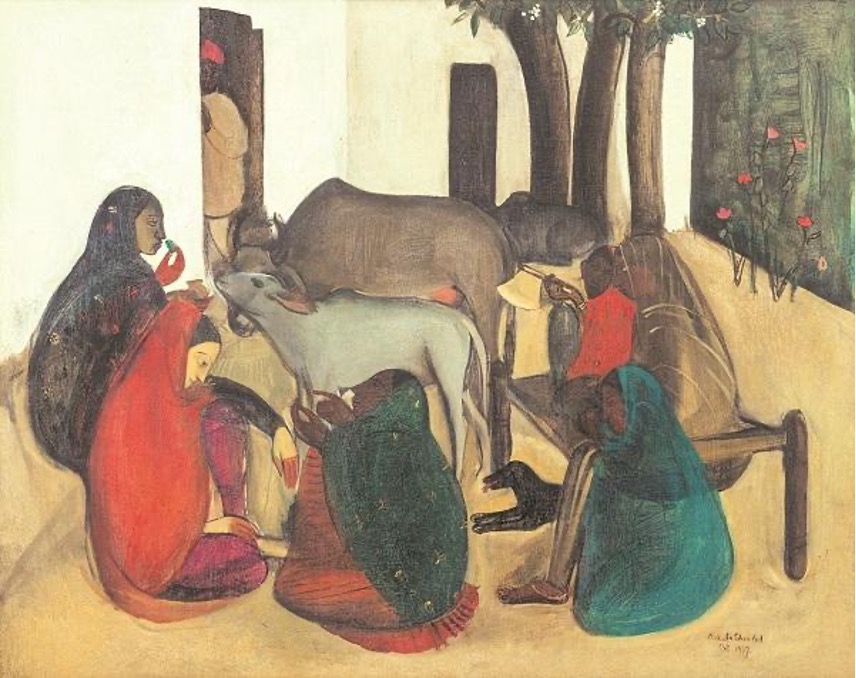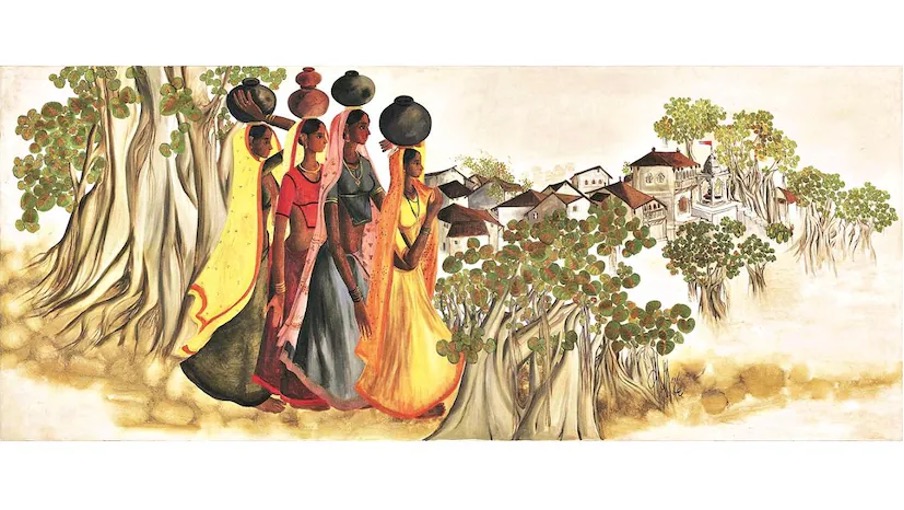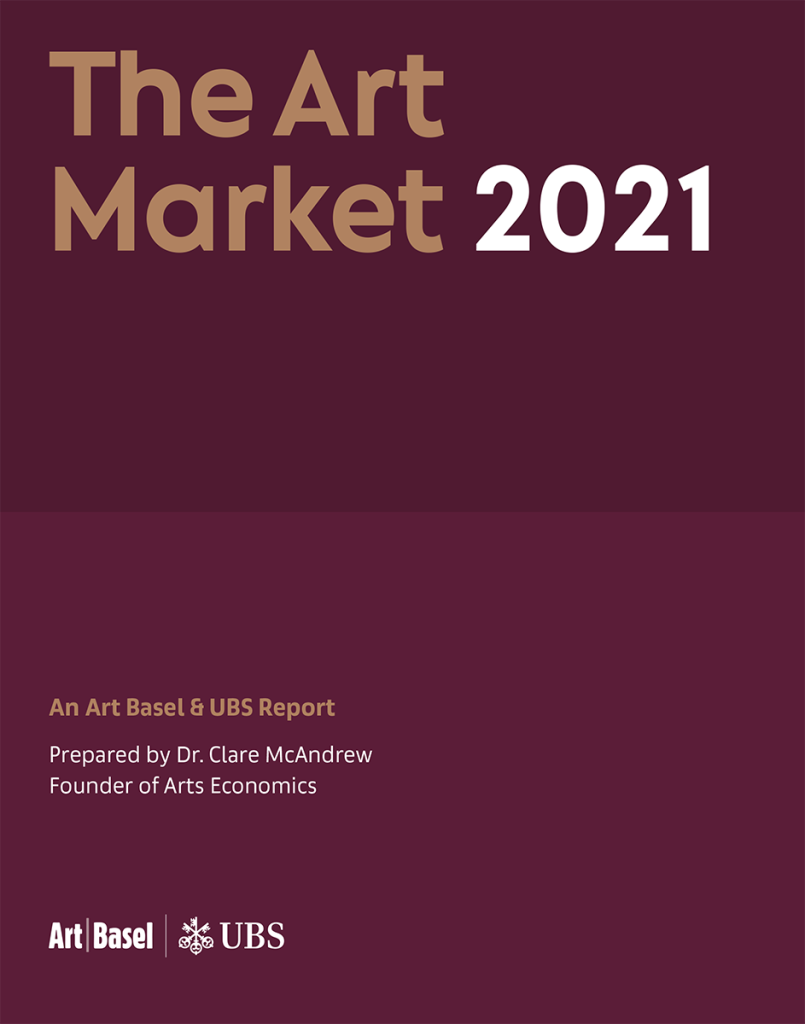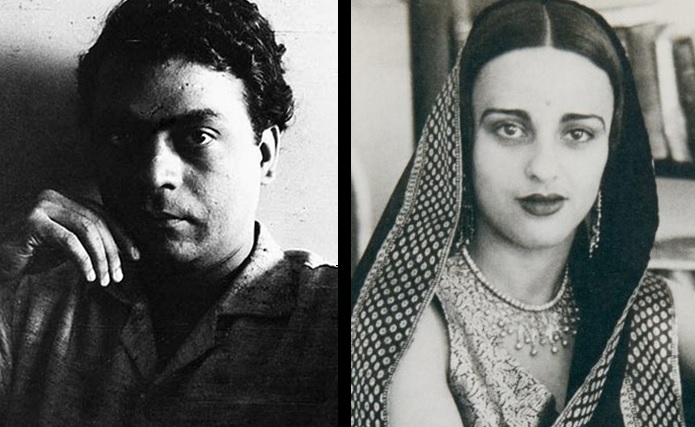On August 31, an SH Raza acrylic on canvas, titled Gestation (1989), became the most valuable Indian artwork ever sold at an auction. It went for an astounding Rs 51.75 crore, including commissions.
The same day, two more records were made. FN Souza’s oil painting, Hunger, fetched Rs 34.5 crore, marking a new pinnacle for the artist, and Tyeb Mehta’s bronze sculpture, Two Heads, sold for Rs 14.95 crore, the highest price for a modern Indian sculpture.
Ten days later, Amrita Sher-Gil smashed all past records. Her 1937 oil on canvas, The Story Teller, sold for a staggering Rs 61.8 crore. This year marks the 110th birth anniversary of the trailblazing Hungarian-Indian artist, who died at 28, leaving behind a phenomenal body of work.
Indeed, it is a season of bloom for Indian art. It is not only about the surging prices, new galleries are coming up, existing ones are expanding, the pool of collectors is growing, and auction houses are finding themselves busier than ever.
Collectors who are digging deep into their pockets would want to own a work that is a standalone wonder. Collectors are also looking beyond the A-listers and at artistic expressions apart from paintings and sculptures. They are also getting younger.
Growing Canvas
In mid-September, at Christie’s sale of South Asian Modern + Contemporary Art in New York, Ranjani Shettar’s rosewood and lacquered wood sculpture, Remenence from Last Night’s Dream, sold for close to Rs 86 lakh, the highest price for the 1977 born Karnataka-based artist. An oil on canvas, titled South Indian Landscape, by Bal Chhabda, whom Christies describes as an unsung figure in the story of Indian Modernism, fetched in excess of Rs 1.3 crore — more than seven times the artist’s previous record. Zarina, the late Indian-American artist, also created a personal record, with her portfolio of eight prints, Letters from Home, going for Rs 2.09 crore.
The ‘State of the Indian Art Market Report FY23’ by Grant Thornton Bharat and Indian Art Investor says the market touched an all-time high in 2022-23, garnering a total turnover of Rs 1,146 crore.
In 2000, the turnover was a mere Rs 13 crore. The current financial year looks set to top the 2022-23 record. Mumbai-headquartered AstaGuru’s September auction, “Modern Treasures”, alone yielded sales of more than Rs 64.7 crore. It turned out to be a white-glove auction, which means all the lots were sold. In the process, six new artist records were established, one of those for scientist-artist Homi Bhabha, whose 1960 oil on canvas, Angels’ Concert…Homage To Mozart, went for nearly Rs 90 lakh.
Some see it as a post-pandemic phenomenon. Indian art has grown three times in scale and global exposure after the pandemic. With people confined to their homes, no possibility of dining out or travelling, and no reason to spend on cars or fancy bags and shoes, many started turning their attention to art. Galleries amplified their online presence and tapped into social media. Online auctions picked up. Platforms such as Instagram and Facebook became great resources for marketing shows and reaching a wider audience.
In late March, Mumbai got a glitzy new cultural space, the multidisciplinary Nita Mukesh Ambani Cultural Centre. Besides huge theatres and arenas for performing arts, it has a four-storey, 16,000 sq ft Art House to exclusively showcase Indian and international artists. The inaugural exhibition was Ranjani Shettar’s, “Confluence: Sangam”, which ran from April 3 to June 4.
Come November the city will also host its first major art fair, Art Mumbai, on the Mahalaxmi Racecourse, with Bollywood and fashion biggies adding a dash of glamour. Meanwhile, the country’s most prominent annual art bonanza, the India Art Fair, will return to Delhi in February 2024 in an even bigger avatar. The 2023 edition was the most ambitious and largest to date…. The 2024 edition will be larger. They have expanded their floor space, and you will see many new and emerging galleries.
Kiran Nadar Museum of Art currently has two 50,000 sq ft spaces, one in Saket, New Delhi, and the other in Noida. In 2026, it will open another one on National Highway 8 opposite Aerocity, not far from the New Delhi airport. Spread over 100,000 square metres, it will house both the museum and the cultural centre. DAG, formerly Delhi Art Gallery, is also on an expansion spree.

Last year, it opened twin galleries at the Taj Mahal Palace in Mumbai, and this year it relocated its flagship gallery in the national capital to Janpath in Lutyens’ Delhi. They moved to Claridges and then Janpath to be in the heart of the city with easy accessibility in an environment that made art viewing pleasure. Earlier in the year, DAG acquired Jamini Roy’s three-storey house at Ballygunge Place, Kolkata, to set up India’s first private museum dedicated to an artist. The Jamini Roy Museum will open in 2024.
AstaGuru has significantly increased the number of auctions offered across diverse categories. Last calendar year, it conducted 12. This year, till September, it had already done 11.
The Young Collector
Adding new shades to the picture is a new profile of collectors in their 30s and 40s. At Christie’s auction on September 20, 22 per cent of the bidders were new and 10 per cent of the buyers were millennials.
This cohort is propelled by increasing incomes, exposure to global art trends, and an interest in contemporary art. They are emerging from across India: Chennai, Bengaluru, Baroda, Ahmedabad, and Nagpur. Resident Indians and a strong NRI base dominate our market, but this is slowly changing to include more international clients owing to the growing global interest in Indian art.
The Knight Frank Luxury Investment Index, which tracks 10 passion investments, found art to be the top performer with a return of 29 per cent in a 12-month period ending December 2022. When compared to the West and China, though, the value of Indian art is much lower. They were always in a position where we could improve our evaluations, and that has just started to happen. The palette is beginning to dazzle.
Read Also:
Top Artists To Watch In 2023 Amid The Indian Art Market’s Exponential Growth

Contributor






